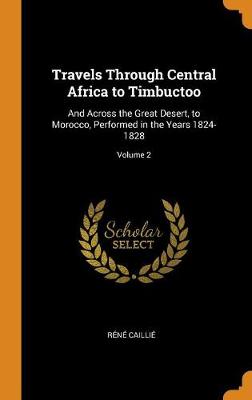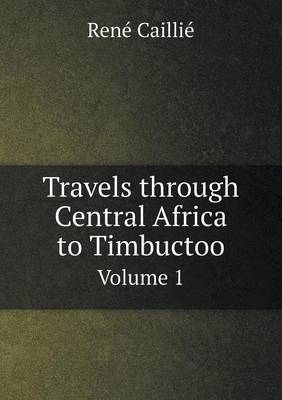Cambridge Library Collection - African Studies
1 primary work • 4 total works
Volume 1
French explorer Rene Caillie (1799-1838) was the first European to document a successful expedition to Timbuktu, Africa's elusive 'city of gold'. Europeans were not welcome there, and until Caillie's expedition no explorer had returned alive. Encouraged by the 10,000 francs offered by the Societe de Geographie to the first non-Muslim to bring back information on the city, he set out in 1824 from Senegal and eventually reached Timbuktu in 1828, remaining there for a fortnight before returning to France. His travels are recounted here in this two-volume work, first published in English in 1830. Volume 1 covers his outward journey, with detailed accounts of his travels through Saint-Louis, Kankan and other exotic waypoints, and the people, customs and commerce he encountered in the course of his trip. Vividly written, Caillie's work remains a landmark in the history of African exploration and adventure.
French explorer Rene Caillie (1799-1838) was the first European to document a successful expedition to Timbuktu, Africa's elusive 'city of gold'. Europeans were not welcome there, and until Caillie's expedition no explorer had returned alive. Encouraged by the 10,000 francs offered by the Societe de Geographie to the first non-Muslim to bring back information on the city, he set out in 1824 from Senegal and eventually reached Timbuktu in 1828, remaining there for a fortnight before returning to France. His travels are recounted here in this two-volume work, first published in English in 1830. Volume 1 covers his outward journey, with detailed accounts of his travels through Saint-Louis, Kankan and other exotic waypoints, and the people, customs and commerce he encountered in the course of his trip. Vividly written, Caillie's work remains a landmark in the history of African exploration and adventure.
French explorer Rene Caillie (1799-1838) was the first European to document a successful expedition to Timbuktu, Africa's elusive 'city of gold'. Europeans were not welcome there, and until Caillie's expedition no explorer had returned alive. Encouraged by the 10,000 francs offered by the Societe de Geographie to the first non-Muslim to bring back information on the city, he set out in 1824 from Senegal and eventually reached Timbuktu in 1828, remaining there for a fortnight before returning to France. His travels are recounted here in this two-volume work, first published in English in 1830. Volume 1 covers his outward journey, with detailed accounts of the people, customs and commerce he encountered on the way. Volume 2 covers his time in Timbuktu, its tribal conflict and slavery, and the return journey across the Sahara Desert while suffering from fever and fatigue. Vividly written, Caillie's work remains a landmark in the history of African exploration and adventure.
French explorer Rene Caillie (1799-1838) was the first European to document a successful expedition to Timbuktu, Africa's elusive 'city of gold'. Europeans were not welcome there, and until Caillie's expedition no explorer had returned alive. Encouraged by the 10,000 francs offered by the Societe de Geographie to the first non-Muslim to bring back information on the city, he set out from Senegal in 1824 and eventually reached Timbuktu in 1828. His travels are recounted here in this two-volume work, first published in English in 1830. Volume 2 covers the final part of his journey to Timbuktu, where he stayed for two weeks. Including his impressions of the peoples, tribal conflict, slavery, customs and commerce, the volume concludes with an account of his journey home across the Sahara Desert, and his survival in spite of suffering from fever and fatigue. Vividly written, Caillie's work remains a landmark in the history of African exploration and adventure.



